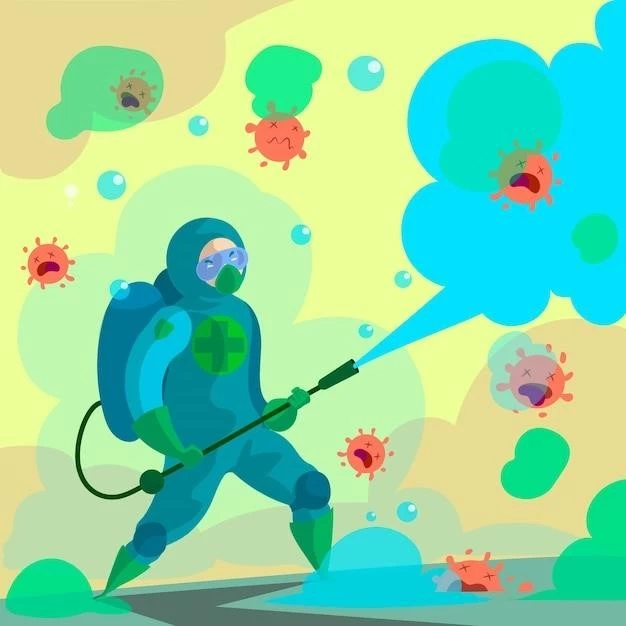History and Treatment of Bubonic Plague
Explore the rich history of the Bubonic Plague from ancient times to the present day. Learn about the symptoms and effective treatment options available. Discover the devastating impact of the Black Death during the Middle Ages and how modern cases are managed. Stay informed on prevention methods, global outbreaks, famous pandemics, ongoing research, and the development of vaccines.
Introduction to Bubonic Plague
Bubonic Plague, caused by the bacterium Yersinia pestis, is a severe infectious disease that has plagued humanity throughout history. Known for its rapid spread and high mortality rate, the plague is primarily transmitted through fleas living on rodents. Symptoms include fever, chills, weakness, and painful lymph nodes. Early detection and treatment with antibiotics are crucial for a positive outcome. Understanding the history and impact of the Bubonic Plague is essential in preventing future outbreaks and ensuring effective management.
Symptoms and Treatment of Bubonic Plague
The symptoms of Bubonic Plague typically include sudden onset of fever, chills, weakness, and painful, swollen lymph nodes (called buboes). Prompt medical attention is crucial if you suspect the plague. Treatment involves early administration of antibiotics such as streptomycin, gentamicin, or doxycycline. Supportive care to manage symptoms and prevent complications is also essential. If you live in or have traveled to plague-endemic areas, be vigilant for symptoms and seek medical help immediately for timely diagnosis and treatment.
The Black Death⁚ Bubonic Plague in the Middle Ages
The Black Death, one of the most devastating pandemics in human history, was caused by the Bubonic Plague in the 14th century. This catastrophic outbreak resulted in the loss of millions of lives across Europe and Asia. The lack of understanding about the disease’s transmission and treatment contributed to its rapid spread and high mortality rate. Studying the Black Death provides valuable insights into the importance of public health measures٫ early detection٫ and effective treatment in combating infectious diseases. Remembering this dark chapter in history is essential for preventing similar large-scale outbreaks in the future.
Modern Cases of Bubonic Plague
While Bubonic Plague outbreaks are rare in modern times, sporadic cases still occur in regions such as Africa, Asia, and the Americas. Prompt identification, isolation of infected individuals, and treatment with appropriate antibiotics are essential to prevent further spread. Health authorities continuously monitor for cases to implement swift containment measures. Travelers to endemic areas must take precautions such as avoiding contact with rodents and flea bites. Stay informed about Bubonic Plague risks and seek medical attention if you develop symptoms after potential exposure.
Prevention of Bubonic Plague
Preventing Bubonic Plague involves controlling rodent populations, avoiding fleas, and taking precautions in endemic areas. Keep homes and surroundings clean, don’t leave food or garbage accessible to rodents, and use insect repellent when outdoors. If traveling to plague-prone regions, wear protective clothing, use insecticides, and avoid contact with sick or dead animals. Educate yourself on symptoms and seek medical help if you suspect infection. By following these preventive measures, you can reduce the risk of contracting this potentially deadly disease.
Bubonic Plague Outbreaks Around the World
Bubonic Plague outbreaks have been reported in various parts of the world, with regions in Africa, Asia, and the Americas being particularly susceptible. These outbreaks often occur in rural areas where living conditions increase the risk of rodent and flea infestations. Authorities implement control measures such as rodent extermination, flea treatments, and public education campaigns to prevent further spread. Travelers should stay informed about outbreak locations and take necessary precautions. Understanding the geographical distribution of Bubonic Plague outbreaks can help individuals make informed decisions to safeguard their health.
Famous Pandemics Caused by Bubonic Plague
The most famous pandemic caused by Bubonic Plague is the Black Death that ravaged Europe, Asia, and Africa in the 14th century. This devastating epidemic wiped out a significant portion of the population, leading to widespread social and economic upheaval. Other famous pandemics include the Third Pandemic in the late 19th to early 20th century and outbreaks in the early 20th century in places like India and China. Studying these historical pandemics provides valuable insights into the global impact of infectious diseases and highlights the importance of effective prevention and control measures to mitigate future outbreaks.
Research and Vaccines for Bubonic Plague
Ongoing research into the Bubonic Plague aims to develop better diagnostic tools, treatment options, and preventive strategies. Scientists continue to study the bacterium Yersinia pestis to understand its genetic makeup and how it causes disease. Vaccines for Bubonic Plague are being investigated, with some in development stages. While no commercially available vaccine currently exists, researchers are working towards creating one that could provide immunity against this deadly infection. Staying informed about advancements in Bubonic Plague research and supporting scientific efforts can contribute to the global fight against this ancient disease.

Conclusion
In conclusion, the history of the Bubonic Plague is marked by devastating pandemics such as the Black Death in the Middle Ages and more recent outbreaks globally. Understanding the symptoms, treatment options, prevention methods, and ongoing research is crucial in combating this deadly disease. By learning from past pandemics, implementing effective public health measures, staying vigilant in endemic areas, and supporting research for vaccines, we can work towards reducing the impact of Bubonic Plague and preventing future widespread outbreaks. Stay informed, take necessary precautions, and prioritize your health to safeguard against this ancient but still relevant threat.
